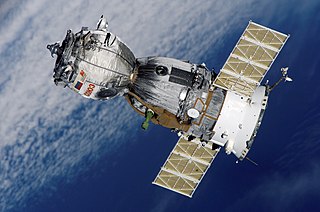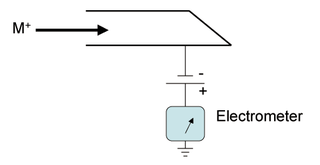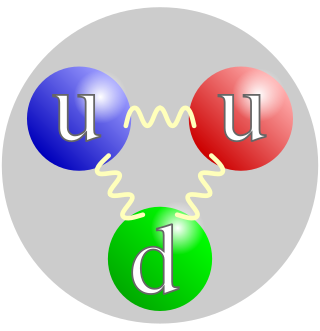
Explorer 1 was the first satellite launched by the United States, and was part of the U.S. participation in the International Geophysical Year. The mission followed the first two satellites the previous year; the Soviet Union's Sputnik 1 and 2, beginning the Cold War Space Race between the two nations.

The Corona program was a series of American strategic reconnaissance satellites produced and operated by the Central Intelligence Agency Directorate of Science & Technology with substantial assistance from the U.S. Air Force. The Corona satellites were used for photographic surveillance of the Soviet Union (USSR), the People's Republic of China, and other areas beginning in June 1959 and ending in May 1972. The name of this program is sometimes seen in pre-ASCII all caps as "CORONA", but in mixed caps, its actual name "Corona" was a codeword, not an acronym.

Cape Canaveral Air Force Station (CCAFS) is an installation of the United States Air Force Space Command's 45th Space Wing.
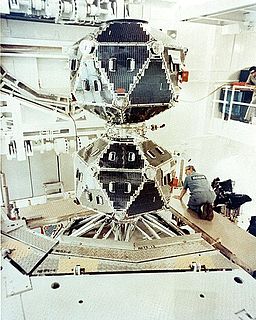
Vela was the name of a group of satellites developed as the Vela Hotel element of Project Vela by the United States to detect nuclear detonations to monitor compliance with the 1963 Partial Test Ban Treaty by the Soviet Union.

The Defense Meteorological Satellite Program (DMSP) monitors meteorological, oceanographic, and solar-terrestrial physics for the United States Department of Defense. The program is managed by the Air Force Space Command with on-orbit operations provided by the National Oceanic and Atmospheric Administration. The mission of the satellites was revealed in March 1973. They provide cloud cover imagery from polar orbits that are Sun-synchronous at nominal altitude of 450 nautical miles (830 km).

National Security Space Launch (NSSL) is a program of the United States Air Force (USAF) intended to assure access to space for DoD and other US government payloads.

The Space-Based Infrared System (SBIRS) is a consolidated system intended to meet the United States' infrared space surveillance needs through the first two to three decades of the 21st century. The SBIRS program is designed to provide key capabilities in the areas of missile warning, missile defense and battlespace characterization via satellites in geosynchronous earth orbit (GEO), sensors hosted on satellites in highly elliptical orbit (HEO), and ground-based data processing and control. SBIRS ground software integrates infrared sensor programs of the U.S. Air Force (USAF) with new IR sensors.

Atlas V is the fifth major version in the Atlas rocket family. This expendable launch system was originally engineered by Lockheed Martin and is now operated by United Launch Alliance (ULA), a joint venture between Lockheed and Boeing.

The ASM-135 ASAT is an air-launched anti-satellite multistage missile that was developed by Ling-Temco-Vought's LTV Aerospace division. The ASM-135 was carried exclusively by United States Air Force (USAF) F-15 Eagle fighter aircraft.

TacSat-3 was the third in a series of U.S. military reconnaissance satellites. It was assembled in an Air Force Research Laboratory Space Vehicles Directorate facility at Kirtland Air Force Base, New Mexico. The TacSat satellites are all designed to demonstrate the ability to provide real-time data collected from space to combatant commanders in the field. TacSat-3 includes three distinct payloads: the Advanced Responsive Tactically Effective Military Imaging Spectrometer (ARTEMIS) hyperspectral imager, the Ocean Data Telemetry Microsatellite Link and the Space Avionics Experiment.
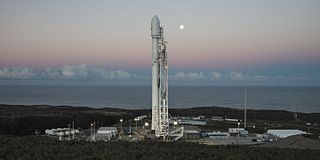
Space Launch Complex 4 (SLC-4) is a launch and landing site at Vandenberg Air Force Base with two pads, both of which are used by SpaceX for Falcon 9 launch operations; operating as Landing Zone 4 (LZ-4) for SpaceX landings.

An X-ray astronomy satellite studies X-ray emissions from celestial objects, as part of a branch of space science known as X-ray astronomy. Satellites are needed because X-radiation is absorbed by the Earth's atmosphere, so instruments to detect X-rays must be taken to high altitude by balloons, sounding rockets, and satellites.
Hitchhiker 1 was a satellite launched by U.S. Air Force on June 27, 1963. It was launched with the aim of studying and measuring cosmic radiation. The satellite was the first successful satellite of the P-11 program, following the failure of the first Hitchhiker satellite in March 1963.
Explorer 36 was a U.S. satellite launched as part of the Explorers program, being the second of the two satellites GEOS. Explorer 36 was launched on January 11, 1968 from Vandenberg Air Force Base, with Delta rocket.

Meteoroid Technology Satellite was a NASA satellite launched as part of Explorers program. MTS was launched on August 13, 1972 on Wallops Flight Facility, with a Scout-D rocket. The objectives of the MTS were to measure the meteoroid penetration rates in the bumper-protected target, and to obtain data on meteoroid velocity and flux distribution. The central hub of the satellite was 3.20 metres (10.5 ft) long and carried the velocity and impact experiments. Bumper targets extended from the satellite, giving it an overall width of 7.015 metres (23.02 ft).
NOAA-11, also known as NOAA-H, was an American weather satellite operated by the National Oceanic and Atmospheric Administration (NOAA). It was part of a series of satellites called Advanced TIROS-N, being the third of the series. NOAA-11 was launched on an Atlas E rocket on September 24, 1988 from Vandenberg Air Force Base, California, United States.
NOAA-12, also known as NOAA-D, was a U.S. weather satellite operated by the NOAA for use in the National Environmental Satellite Data and Information Service (NESDIS). It was part of a series of satellites called Advanced TIROS-N, being the fifth of the series. NOAA-12 was launched on an Atlas E rocket on May 14, 1991 from Vandenberg Air Force Base, California.

SOLRAD 2 was the public designation for a combination surveillance and solar X-Ray and ultraviolet scientific satellite, the second in the SOLRAD program developed by the United States Navy's Naval Research Laboratory. The SOLRAD scientific package aboard the satellite provided cover for the GRAB electronic surveillance package, the mission of which was to map the Soviet Union's air defense radar network.

